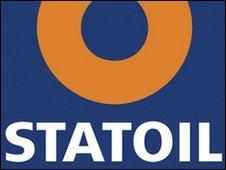North Sea oil well still unstable
- Published

The Statoil platform was eveacuated last week
The struggle to stabilise a North Sea oil well some 120 miles east of Shetland is continuing.
The Norwegian operators, Statoil, said it could be days until the Gulfaks C well can be safely capped.
A spokesman said the risk of a spill in the waters east of Shetland was very low, but Norway's safety regulators said the incident had been "serious".
Eighty nine workers were evacuated from the platform, which lies in Norwegian waters, six days ago.
The evacuation followed a sudden rise in gas pressure under the sea bed.
The incident comes at a time when the offshore industry is reviewing its safety procedures worldwide, and while BP faces a huge technical and political challenge in handling the giant Gulf of Mexico oil spill.
No leaks
Tonnes of specialist drilling mud have been pumped into the Gulfaks well in a bid to contain pressure, and Statoil is attempting to cap the well with cement.
Statoil spokesman Gisle Johanson said the well was now more stable, but it may not be safely plugged for several more days - in what has been an unusually long struggle to bring a North Sea well under control.
He said: "The pressure is still unstable, but the situation has not worsened. We are continuing to work to normalise the situation."
He added that no leaks had so far been detected and the company "deems the risk of a blowout as very small."